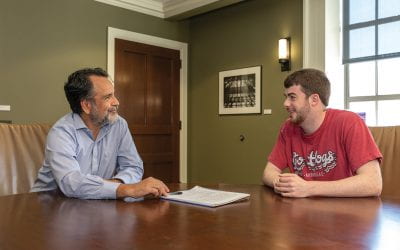Power Plays
By Kendall Curlee
Photos by Beau Burris


“The grand scale of both Versailles and D.C., built to awe and impress, gets the job done.”
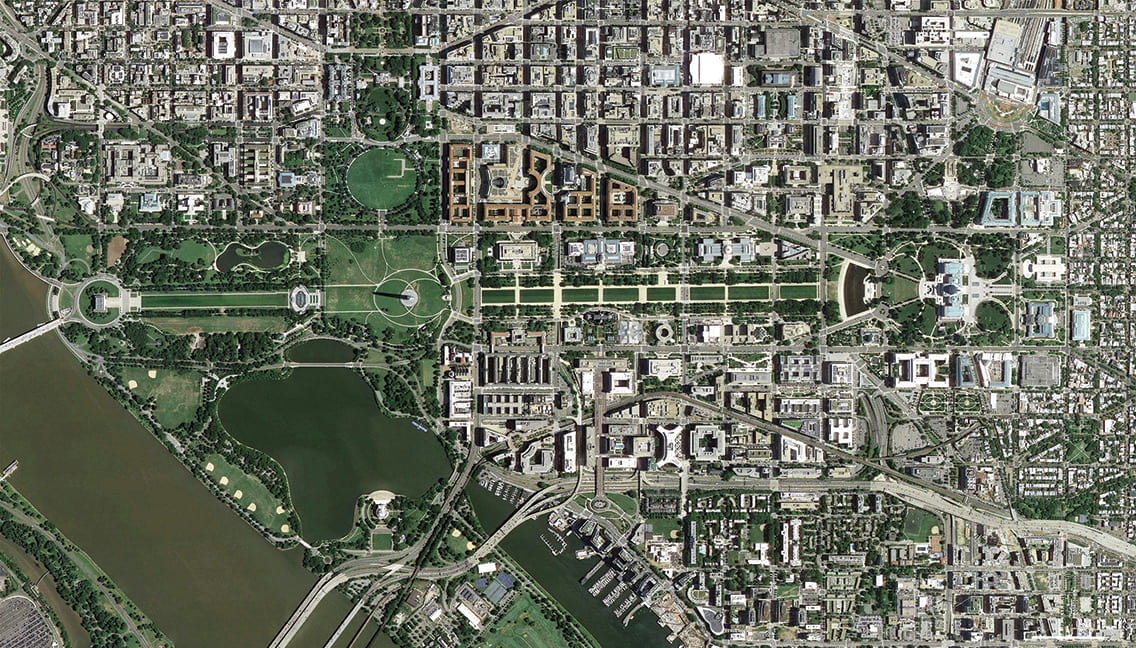
Washington, D.C. Satellite imagery © Google Earth
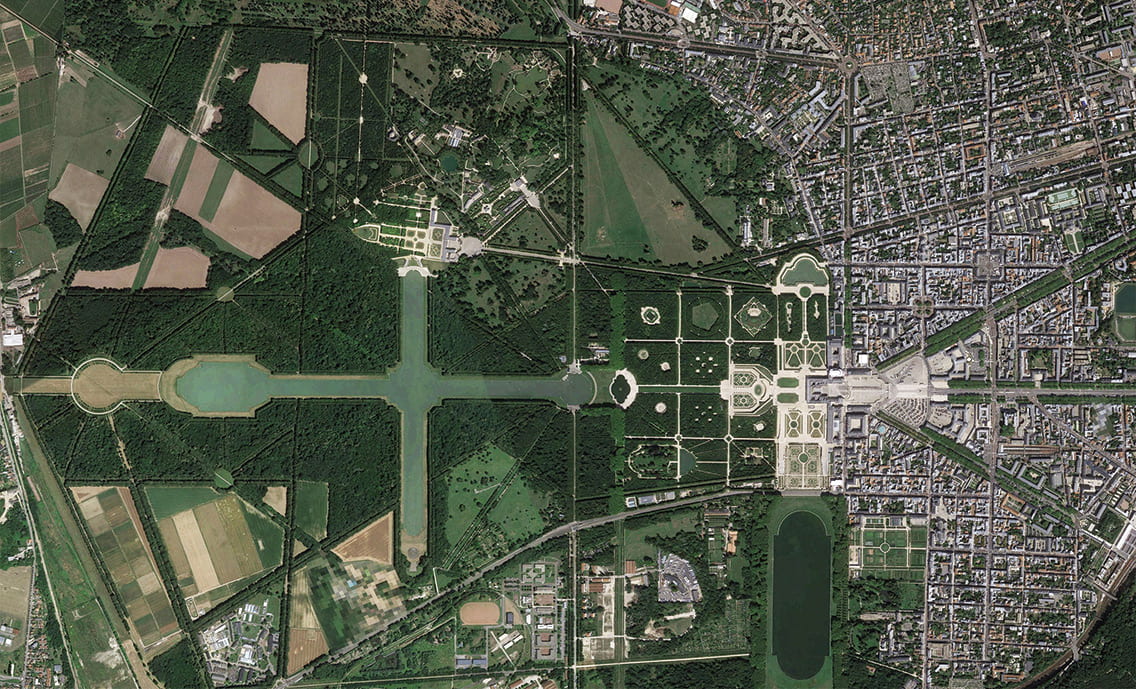
Versailles, France. Satellite imagery © Google Earth
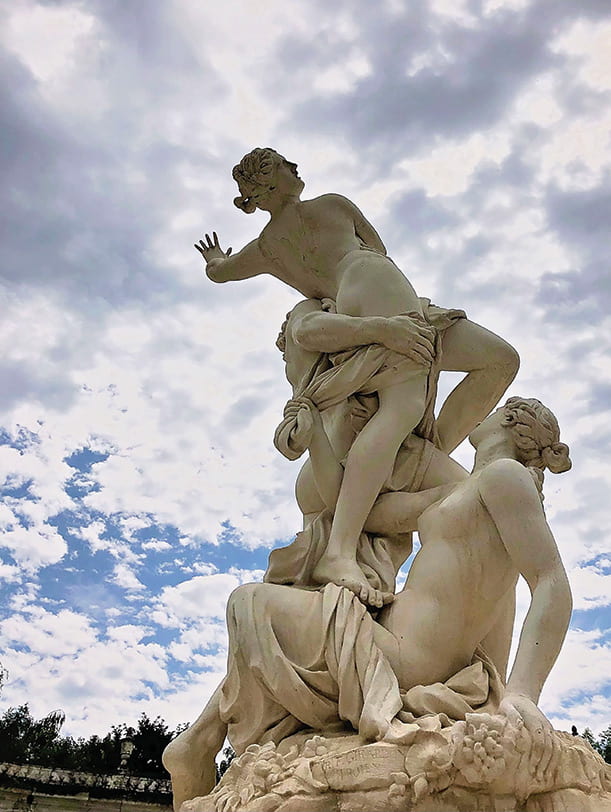
Proserpina
Beau Burris has been obsessed with Versailles “from a pretty young age — I spent a lot of time on Google Earth, just exploring the geometry and the stories, because there’s a narrative that permeates the whole space.” So when the landscape architecture major had the opportunity to travel there in 2019, after spending a semester at the U of A’s Rome Study Center, he jumped at the chance. He spent two full days at Versailles, taking in the vast scale, the Baroque geometries, and the Apollonian iconography that expressed Louis XIV’s imperial ambitions. He came away determined to document Versailles as a “landscape of power” that shares many similarities and some key differences with our own capital city, Washington, D.C.
Louis XIV launched his first building campaign at the Chateau of Versailles in 1664, enlisting architect Louis Le Vau to redesign and expand a relatively small hunting lodge, and working closely with his gardener, André Le Nôtre, to develop 2,000 acres of landscaped grounds. The palace, as completed in 1715, measures almost five football fields in length, but the greatest triumph in scale lies in the “Grand Perspective” as viewed from Louis XIV’s bedroom: a stately sequence of terraces, bosquets, flawless turf, and fountains that terminate in a mile-long, 63-acre artificial canal, dug by hand.
The monumental scale of Louis XIV’s pleasure palace is even more striking given the raw material that he worked from: “Versailles was a total swamp before he started his work there, and every terrace and view, everything was built by hand,” Burris said. “They didn’t even have steam-powered excavation machinery back then, so there were thousands of soldiers shoveling very thick, very rich clay soil on a daily basis.”
An absolute monarch accustomed to getting his way, Louis even tried to reroute the River Eure, 40 miles from Versailles, to power Le Nôtre’s system of fountains all at once. “That was kind of like a Titanic moment for him – the failure of it makes it a lesson about his hubris,” Burris said. Despite this setback Louis XIV had the resources and labor to bring Versailles to its present form within a span of 50 years.

Washington D.C.
Due to COVID-19, Burris was not able to experience Washington, D.C. in person — instead, he returned to Google Earth to study the city, which was founded in 1790 and planned by Pierre Charles L’Enfant. Unlike Versailles, this building campaign was led by many, came together slowly and is still a work in progress. Despite these differences, Burris found striking similarities in plan and scale. “Both really heavily implement Baroque geometries, which are pretty recognizable from an aerial perspective because they include long, unfaltering axes. And these will radiate out and collide at points of importance.” Versailles, built on a strong east-west axis, extends out from the palace, but in D.C. there are multiple focal points. Nevertheless, the National Mall, terminated to the west by the Lincoln Memorial and to the east by the U.S. Capitol, recalls Louis’ “Grand Perspective” in presenting a sequence of monuments, water features and manicured landscapes, at almost precisely the same length. “At the National Mall, the distance from the Capitol to the Lincoln Memorial is 2.23 miles; at Versailles, the distance from the forecourt to the edge of the park is just 0.2 miles shorter,” Burris noted in his thesis. The grand scale of both Versailles and D.C., built to awe and impress, gets the job done. “It all comes back to the Romans, and the Western tradition of public space that instructs us, whoever is in charge of space, has the power,” Burris said.
Both Versailles and D.C. couple marble visions of power with violence. “At Versailles, it’s very direct! Louis XIV was not shy about intimidating his courtiers,” Burris said. As an example, he points to the Latona fountain, a grotesque retelling of the myth of Latona, mother of Apollo and Diana. On the run from a jealous Juno, she cursed the Lycians who prevented her and her children from drinking from their pond, turning them into frogs and lizards. Given the Sun King’s identification with Apollo, the fountain functions as a thinly veiled allegory for Louis and his mother’s victory over rebellious nobles during his childhood, no doubt reminding his courtiers not to cross their king.
More Field Notes
Goodwill Job Hunting
By Katie Wilson PowellPhotos by Chieko Hara For Jimmy Donlon, a senior marketing and management major and Honors College fellow, serving the community has meant being a part of the community throughout his entire life. Donlon’s father, a physician, founded a network...
Love Your Back? Take a Break!
By Hiba TahirPhotos by Russell Cothren Sitting down may be hazardous to your health. Those who spend several hours a day in seated positions — which, in the last year or two, is most of us, thanks to the COVID-19 pandemic — may find themselves struggling with lower...
The Monster She Made
Image: Leigh Caruthers PrasselBy Hiba TahirPhotos by Chieko HaraWhen a family member was diagnosed with Ewing’s sarcoma, a rare form of bone cancer, Morgan Walker, an English major from Prairie Grove, saw many similarities between the grim prognosis and the plight of...
Prime Time for Gene Editing
Mary Jia searches for bacteria colonies that contain the plasmid needed to construct the gene-editing tool she’s designingBy Katie Wilson PowellPhotos by Chieko Hara Mary Jia, a biomedical engineering junior and Bodenhamer Fellow, has had her sights set on CRISPR...
Conscious Couture
By Hiba TahirPhotos by Hiba Tahir and Chieko Hara With normalcy beginning to return after months spent working from home, mostly in sweatpants, many are itching to refresh their wardrobes. Before you whip out your card for the latest trends, though, consider this:...
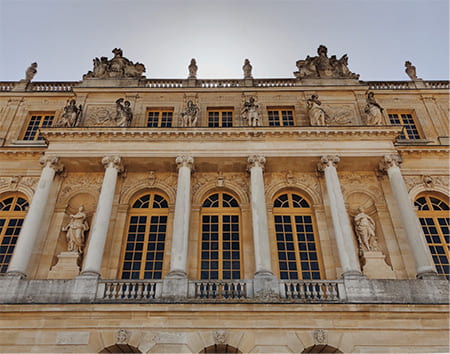
Versailles
Washington, D.C., also celebrates war with proud equestrian statues and memorials placed throughout the city. Just as Louis looked to Apollo, styling himself as the “Sun King,” Burris argues that we celebrate our founding fathers as “god heroes.” He emphasized the fact that the historic core of Washington was built by enslaved people, for slaveowners. “Jefferson is no angel, and he gets a whole temple to himself. It’s easy to forget that underneath all the beautiful facades and the carefully manicured grounds that there’s blood in the soil of Washington.”
Today, Versailles is a museum documenting a megalomaniac monarch, located 10 miles outside of Paris, France’s capital, while D.C. remains a seat of power for a democratic republic and a potent site for protests. Washington’s story is still unfolding, and the narrative is not always clear. “I think that Versailles is pretty honest about what it is; I think the narrative Louis XIV wove throughout the chateau and the gardens is that he was in charge. In Washington, everything is just a little bit more nebulous, and points in a lot of ways to our indecision as a nation about who we want to be.”
Burris’ research was supported by an Honors College Research Travel Grant.


